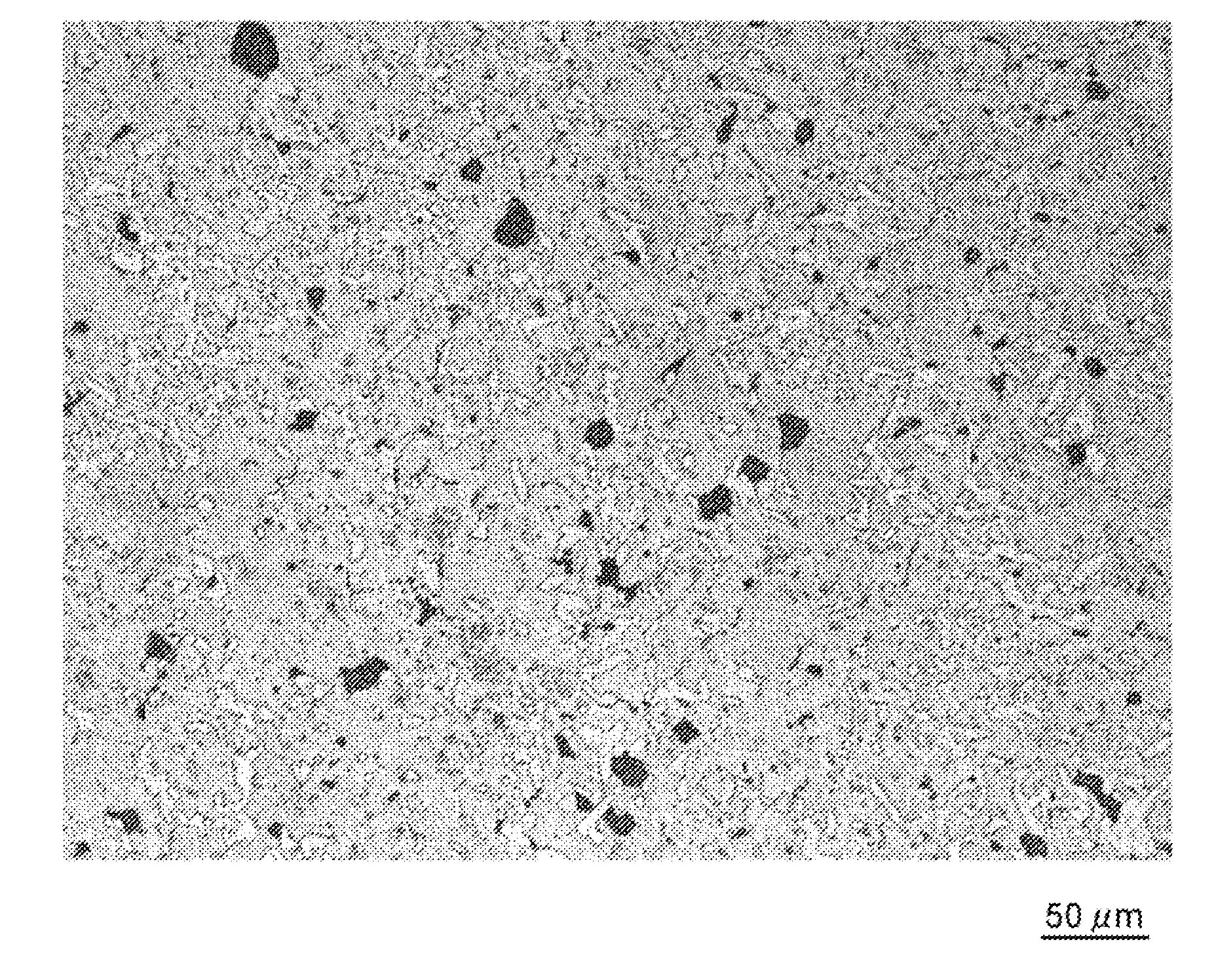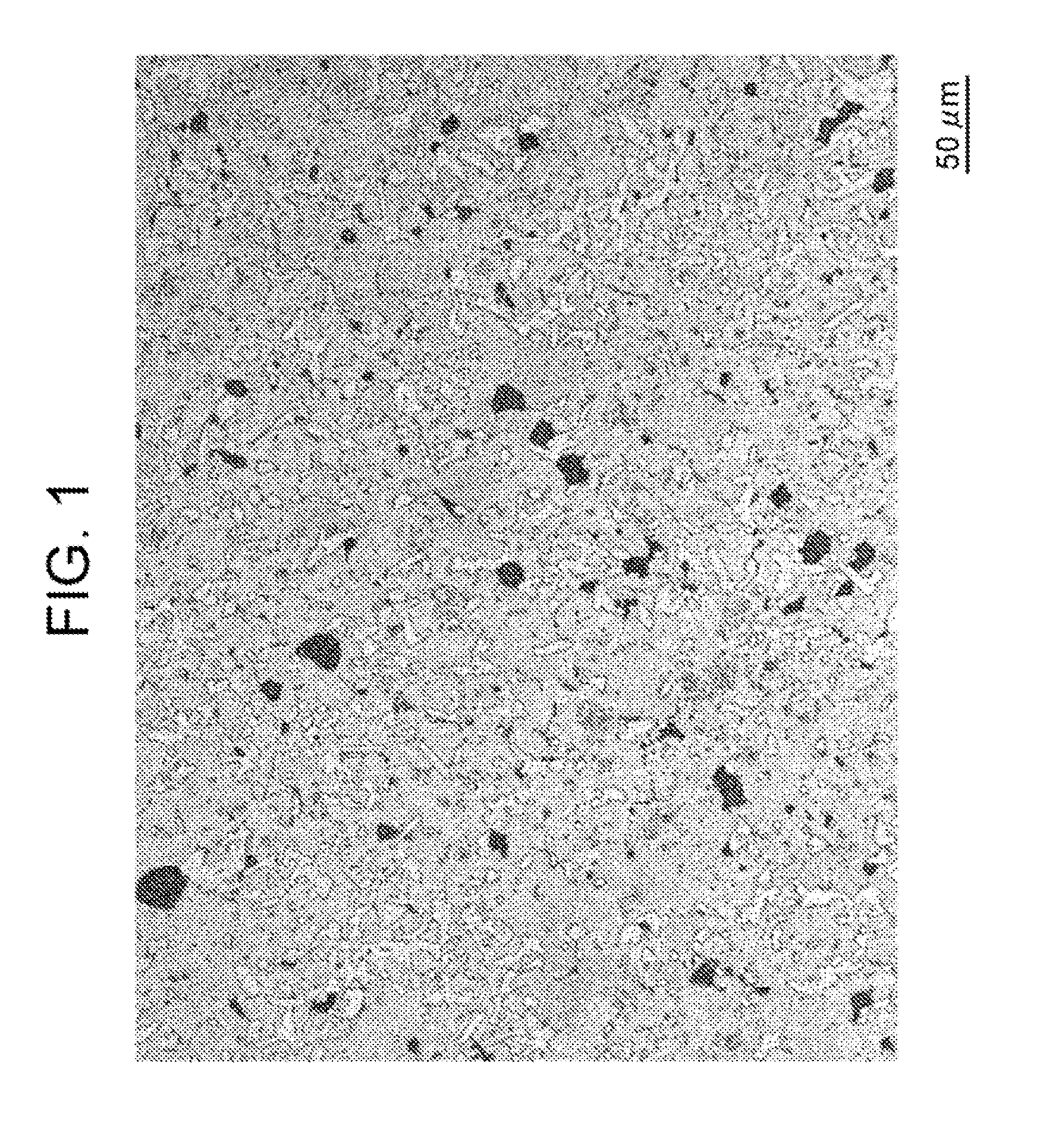Sintered alloy and manufacturing method thereof
- Summary
- Abstract
- Description
- Claims
- Application Information
AI Technical Summary
Benefits of technology
Problems solved by technology
Method used
Image
Examples
example 1
[0072]The iron alloy powder A including, in percentage by mass, Cr: 34, Ni: 10, Si: 2, C: 2 and the balance of Fe plus unavoidable impurities, the iron alloy powder B including, in percentage by mass, Cr: 18, Ni: 8 and the balance of Fe plus unavoidable impurities, the iron-phosphorus powder including, in percentage by mass, P: 20 and the balance of Fe plus unavoidable impurities, the nickel powder, the copper powder and the graphite powder were prepared and mixed with one another at the ratios shown in Table 1 to blend the raw material powder. The raw material powders were compressed respectively in the shape of pillar with an outer diameter of 10 mm and a height of 10 mm, in the shape of square pillar with a length of 26 mm, a width of ii mm and a height of 8 mm, and in the shape of thin plate with an outer diameter of 24 mm and a height of 8 mm, and then sintered at a temperature of 1100° C. under vacuum atmosphere to form sintered samples indicated by numbers of 01 to 11. The co...
example 2
[0085]The iron alloy powders A having the respective components shown in Table 3 were prepared, and mixed with the iron alloy powder B, the iron-phosphorus alloy powder, the nickel powder, the copper powder and the graphite powder which were used in Example 1 at the ratios shown in Table 3 to blend the respective raw material powders. The thus obtained raw material powders were compressed and sintered respectively in the same manner as in Example 1 to form sintered samples 12 to 30 in the shape of pillar, in the shape of square pillar and in the shape of thin plate. The total components of the sintered samples were listed in Table 3. With respect to the sintered samples, the average particle diameter of carbide in the phase A and the phase B, the ratio of the phase A, the maximum dimension of the phase A, the thermal expansion coefficient, the increase in weight after oxidizing test, the corrosion area ratio and the abrasion depth after roll-on-disc abrasion test were measured in th...
example 3
[0100]The iron alloy powders B having the respective compositions shown in Table 5 were prepared, and mixed with the iron alloy powder A, the iron-phosphorus alloy powder, the nickel powder, the copper powder and the graphite powder which were used in Example 1 at the ratios shown in Table 5 to blend the respective raw material powders. The thus obtained raw material powders were compressed and sintered in the same manner as in Example 1 to form sintered samples 31 to 41 in the shape of pillar, in the square pillar and in the shape of thin plate. The compositions of the sintered samples were listed in Table 5. With respect to the sintered samples, the average particle diameter of carbide in the phase A and the phase B, the ratio of the phase A, the maximum dimension of the phase A, the thermal expansion coefficients, the increases in weight after oxidizing test, the corrosion area ratio and the abrasion depth after roll-on-disc abrasion test were measured in the same manner as in Ex...
PUM
| Property | Measurement | Unit |
|---|---|---|
| Temperature | aaaaa | aaaaa |
| Length | aaaaa | aaaaa |
| Length | aaaaa | aaaaa |
Abstract
Description
Claims
Application Information
 Login to View More
Login to View More - Generate Ideas
- Intellectual Property
- Life Sciences
- Materials
- Tech Scout
- Unparalleled Data Quality
- Higher Quality Content
- 60% Fewer Hallucinations
Browse by: Latest US Patents, China's latest patents, Technical Efficacy Thesaurus, Application Domain, Technology Topic, Popular Technical Reports.
© 2025 PatSnap. All rights reserved.Legal|Privacy policy|Modern Slavery Act Transparency Statement|Sitemap|About US| Contact US: help@patsnap.com



